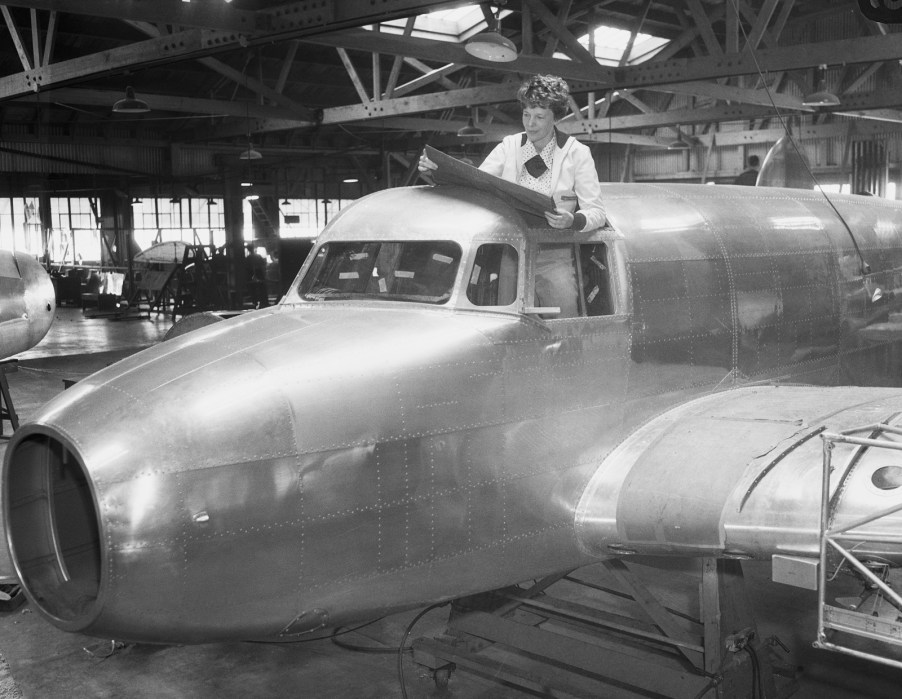
Underwater Drone May Have Found Amelia Earhart’s Lost Lockheed Electra Plane – Specs and Features Here
Ocean exploration team Deep Sea Vision has presented sonar images of what could be the end of a decades-long mystery: what happened to pilot Amelia Earhart and her navigator, Fred Noonan? The team swept thousands of feet of Pacific Ocean floor between September and December 2022. On January 27, the team announced that they had captured something that looked like a Lockheed Electra airplane. The images were taken about 100 miles from Howland Island between Hawaii and Australia.

Earhart and Noonan had departed eastbound from California on their quest some 86 years ago, on May 21, 1937. The pair hoped to seat Amelia as the first female pilot to fly around the world. After six weeks, they had made it across the U.S., past South America, and over the Atlantic.
Having flown over the Sahara and the Middle East, they touched down in New Guinea before starting the longest leg of continuous flight. They were scheduled to refuel on Howland Island, about halfway between Hawaii and Australia. After several radio transmissions referencing bad weather, low fuel, and navigational estimating, transmissions stopped.
While the U.S. Coast Guard was actively stationed near Howland Island at the time, a three-week-long search ended with zero sign of the pilot, her navigator, or her plane. The island remains uninhabited.
Amelia Earhart’s Lockheed Electra 10E plane

By 1937, Amelia was already a famous aviator. She had solo-crossed the Atlantic in 1932, a trip only accomplished by Charles Lindbergh before her.
Based in Burbank, California, Lockheed Aircraft Company built the plane Earhart selected to take around the globe. The Electra 10E was one of five Model 10 variants. The production Electra was designed small and for only short to medium distances. Still, the base model could carry two crew members with enough space in the back for 10 passengers.
The Electra 10E was two-engined, low-winged, all-metal mono-bodied, twin-tailed, and came with retractable landing gear. Lockheed built 15 E-variants. Amelia’s was serial number 1055.
The $80,000 plane was ordered in March 1936 and was funded by donations made by individuals through the Purdue Research Foundation. To make it around the world, the modifications list included:
- Four auxiliary fuel tanks in the passenger compartment
- Navigator’s station to the rear of the fuel tanks
- Remove passenger windows
- Sperry autopilot added
- Add radio and navigation equipment
- Add more batteries
Amelia test-flew her Electra in July 1936. Its civil certification number was NR16020. The “R” indicates modifications to the production model. The plane’s certification was restricted to only carrying two crew members.
Lockheed Electra 10E NR16020 Specs

| 1936 Lockheed Electra 10E NR16020 | Spec |
|---|---|
| Length | 38 ft. 7 in. |
| Wingspan | 55 ft. |
| Empty weight | 7,2600 lbs |
| Max takeoff weight | 16,500 lbs |
| Fuel capacity | 1,151 gallons |
| Engine | Supercharged 22L 9-cylinder Pratt & Whitney Wasp S3H1 |
| Horsepower at 5,000 feet | 550 hp @ 2,200 rpm |
| Horsepower at takeoff | 600 hp @ 2,250 rpm |
| Max speed, sea level | 177 mph |
| Max range | 4,500 miles |
With these new sonar images of what might be the legendary Lockheed Electra 10E, we can’t help but curiously await word of any upcoming recovery mission.
Sources: Post and Courier, This Daily Aviation





